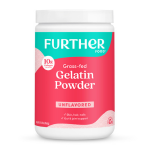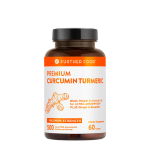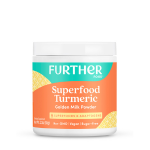Dr. William Li is a world-renowned physician, as well as the author of “EAT TO BEAT DISEASE.” In this article, Dr. Li explains the health benefits of eating fish, how the Omega 3s in fish could be the key to longevity, and why eating fish should be a staple in any healthy diet. Read on to learn more about the benefits of omega-3s, the fatty acid found in fish, and exactly which types of fish you should be eating in order to properly reap the health benefits.
What Fish You Should Incorporate Into Your Diet And Why
Fish has been recommended as a great addition to any nutritious diet, and for quite some time now. Rich in high-quality proteins, vitamins, and healthy oils, fish and seafood, in general, are widely considered to be a healthful choice. They are also staples of Blue Zone and Mediterranean diets, which have been linked to increased longevity.
However, the contamination of our oceans has resulted in mercury being absorbed by fish, giving many of us an understandable cause for concern when it comes to regularly consuming seafood. The question is: how can we reap the benefits of fish while also avoiding possible contaminants? Read more to find out about what seafood can do for your body, and which fish is best for better health.
Fatty Fish Are Rich In Omega-3 Fatty Acids
The health benefits are clear. Fish, and fatty fish in particular, are a rich source of omega-3 fatty acids. These are essential dietary fats otherwise known as PUFAs, and they offer a variety of health benefits, including the ability to live a longer life.
One 16-year study of 2,692 senior adults conducted in 2013 by the Harvard School of Public Health and the University of Washington concluded that a diet rich in fish actually predicts longevity. In fact, participants whose blood showed high levels of omega-3 PUFAs lived an average of 2.2 years longer than those without high levels of PUFAs. High levels of omega-3s in the blood were also associated with a 27 percent decrease in overall mortality risk, and a 35 percent decrease in the risk of mortality due to heart disease. This highlights just how beneficial the omega-3 fatty acids in fish can be for our health.
One specific omega-3, which goes by the simplified name DHA, was associated with a 40 percent decreased risk of dying from coronary heart disease. It was especially associated with a reduction in death caused by arrhythmia (irregular heartbeat).
The Omega 3:6 Ratio
It’s not just the omega‑3 PUFAs that play a role in generating health, but the ratio between omega‑3 and omega-6, another group of fatty acids.
In regards to cancer protection, researchers have found that the higher the overall intake of marine omega‑3 in the diet, the greater the benefit. In contrast, it’s important to note that higher omega‑6 PUFA consumption in relation to omega‑3 PUFA (the omega 3:6 ratio) is linked to unhealthy inflammation and an increased risk of disease.
Unfortunately, those who follow a Western diet (a diet that is high in processed, fried, and fatty foods) typically tend to eat way too much omega-6 relative to omega-3s, which can lead to serious health problems. Foods high in omega-6 PUFA include vegetable oils like palm oil, soybean oil, grapeseed oil, and sunflower oil, and also any foods, including fish, that have been fried or processed. It can also include fish that was not wild-caught.
Wild fish naturally get their omega-3s from aquatic plants. If the fish is farmed, then it will often be raised on a diet of corn, soy, or other feedstuffs that contain little or no omega-3s. This unnatural, high-corn diet also means that some farmed fish accumulate unhealthy levels of the wrong fatty acids.
This is why where our fish comes from and how they are prepared plays such an important role in determining the omega 3:6 ratio. Fish that have been farmed or fried in oil will not provide us with the same health benefits as freshly caught, grilled or steamed fish.
Additional Benefits of Eating Fish
Eating fish can lower risk of cancer.
Omega‑3 PUFAs have been shown to have antiangiogenic activity, and large population studies have found an association between seafood intake and a reduced risk of cancer. For example, the Singapore Chinese Health Study examined the health of 35,298 women and found that eating three ounces of fish or shellfish per day was associated with a 26 percent reduced risk of breast cancer, while the EPIC study showed that eating three ounces or more of fish daily was associated with a 31 percent decreased risk of colon cancer.
Fish can prevent the development of age-related macular degeneration.
The benefits of fish extend way beyond cancer prevention. In the Women’s Health Study of 38,022 middle-aged women, Harvard researchers found that those who consumed one or more servings of fatty fish per week over a ten-year period had a 42 percent decreased risk of developing age-related macular degeneration (AMD), which is the most common cause of vision loss among people over the age of 50.
Meanwhile, a large meta-analysis involving 128,988 people across eight different studies in Iceland, the Netherlands, United States, and Australia showed that eating fish, ranging in frequency from less than once a month to three to four times per week, was associated with a decreased risk of AMD by 24 percent.
Choosing the healthiest sources of omega-3 fatty acids
If your goal is achieving better health, fatty fish is definitely a way to go. And as we’ve established, the fresher your seafood is, the better the benefits.
If you live along a coast, you’re probably eating extremely fresh seafood already, but even inland folks can buy seafood that has been flash-frozen at sea. This upholds the beneficial omega‑3 fatty acids, which are still present when the fish is thawed closer to home.
To help you navigate the assortment of seafood you encounter at the market, I’ve compiled a list of frequently encountered seafoods based on their level of omega‑3 PUFAs, as well as their common appearance in markets and on restaurant menus. To generate this list, I surveyed the world’s top fish markets, restaurant menus, and fisheries’ sustainability charts, then cross-referenced items with reputable databases for nutrient composition across eight countries to extract information on the products with the highest levels of omega‑3 PUFAs (EPA + DHA) per 100 grams of the seafood.
Amounts of Omega-3s in Fish
HIGHEST LEVEL (3–30grams/100 gram of seafood):
- Hake, sea cucumber, manila clam, big eye tuna, yellowtail, sea bass, bluefin tuna, cockles
HIGH LEVEL (>0.5–2.44 grams/100 gram):
- Salmon, red mullet, halibut, Pacific oysters, gray mullet, sardines, arctic char, bluefish, sea bream, Mediterranean seabass, spiny lobster, anchovies, pompano, redfish, black bass, swordfish, John Dory, eastern oysters, squid, rainbow trout
MEDIUM LEVEL (>0.2–0.5 grams/100 gram):
- Crab, mussels, striped mullet, octopus, scallops, cuttlefish, shrimp and prawns, whiting, dried cod, striped bass, sole, Atlantic lobster
LOW LEVEL (<0.2 grams/100 gram):
- Cod, grouper, brown shrimp, periwinkle, whelk, abalone, skate
Other Sources of Fatty Acids
Scientific evidence has shown that a high intake of total omega‑3 fatty acid is healthy, but there are actually three main forms of this fat that are associated with health benefits, and not all of them come from fish.
Those three forms are:
- EPA (eicosapentaenoic acid)
- DHA (docosahexaenoic acid)
- ALA (alpha linolenic acid)
Fish, seaweed, and algae can provide DHA and EPA fatty acids, while good sources of ALA omega-3 fatty acids tend to be plant-based foods, such as nuts and seeds. Eating a variety of omega-3 sources is important. Fatty fish is an excellent dietary source of omega-3 but you can also meet your recommended omega-3 intake by eating plant-based foods, including omega-3-rich seaweed, algae, nuts, and seeds.
Here are some of the best plant-sources of ALA:
- Chia seeds
- Flaxseeds
- Hemp seeds
- Walnuts
- Edamame
- Kidney Beans
Eating a combination of healthy sources, that is fish and plant-based foods rich in omega-3s is a great way to kickoff and maintain your health journey.
And remember: fried fish is not the answer!
The aforementioned health benefits of fish do not apply to fried fish. While studies among men showed that the consumption of fried fish had no impact on mortality risk; studies among women are a different story. Higher consumption of fried fish has been linked to an increased risk of cardiovascular mortality, respiratory disease mortality, and overall mortality in women, and probably for a number of reasons. For instance, frying the fish creates trans-fatty acids and also increases the energy density of the end product, both of which could potentially undo any good work that omega-3s carry out. To make sure you’re truly getting the benefits of the omega-3s, avoid frying your fish. Instead, try grilling or steaming.
So now that you know a little more about not only the benefits of fish, omega-3s, and which ones are the best for your health, what are you adding to your menu this week?
Want to read more?
What Is Fish Collagen? Everything You Need To Know Explained
Diagnosed with High Triglycerides? Why Fish Oil Needs to Be Part of Your Diet
Ginger Maple Glazed Salmon (Dairy-Free, Gluten-Free, Low-Carb)

























